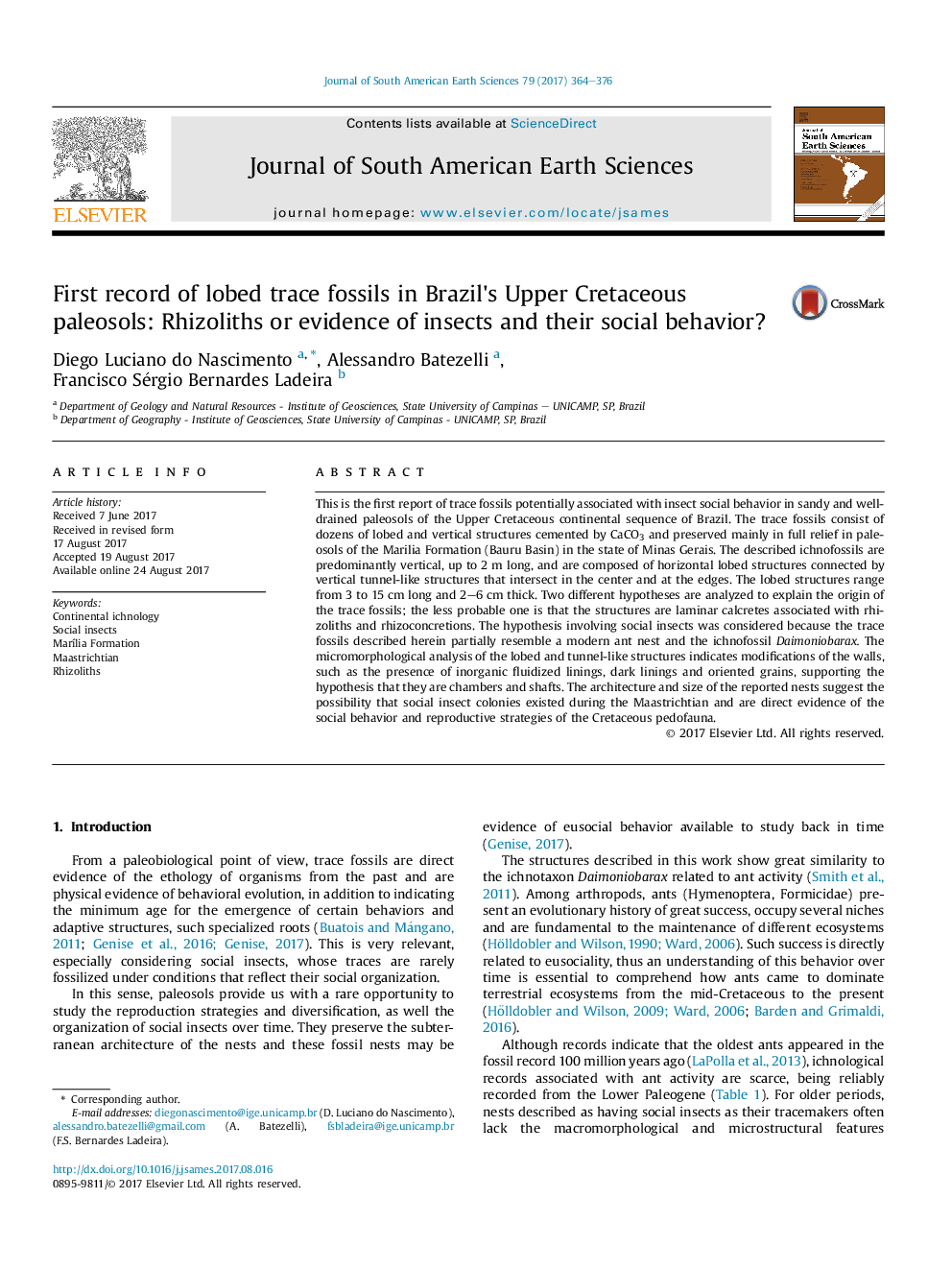| کد مقاله | کد نشریه | سال انتشار | مقاله انگلیسی | نسخه تمام متن |
|---|---|---|---|---|
| 5780411 | 1635131 | 2017 | 13 صفحه PDF | دانلود رایگان |
- We report the first discovery of complex trace fossils probably related to insects for the Upper Cretaceous in Brazil.
- This study demonstrates that thetrace fossils present in MarÃlia Formation is very similar to Daimoniobarax ichnogen.
- The ichnofossils described indicate that the social behavior of insects was probably already occuring in Maastrichtian.
This is the first report of trace fossils potentially associated with insect social behavior in sandy and well-drained paleosols of the Upper Cretaceous continental sequence of Brazil. The trace fossils consist of dozens of lobed and vertical structures cemented by CaCO3 and preserved mainly in full relief in paleosols of the Marilia Formation (Bauru Basin) in the state of Minas Gerais. The described ichnofossils are predominantly vertical, up to 2Â m long, and are composed of horizontal lobed structures connected by vertical tunnel-like structures that intersect in the center and at the edges. The lobed structures range from 3 to 15Â cm long and 2-6Â cm thick. Two different hypotheses are analyzed to explain the origin of the trace fossils; the less probable one is that the structures are laminar calcretes associated with rhizoliths and rhizoconcretions. The hypothesis involving social insects was considered because the trace fossils described herein partially resemble a modern ant nest and the ichnofossil Daimoniobarax. The micromorphological analysis of the lobed and tunnel-like structures indicates modifications of the walls, such as the presence of inorganic fluidized linings, dark linings and oriented grains, supporting the hypothesis that they are chambers and shafts. The architecture and size of the reported nests suggest the possibility that social insect colonies existed during the Maastrichtian and are direct evidence of the social behavior and reproductive strategies of the Cretaceous pedofauna.
Journal: Journal of South American Earth Sciences - Volume 79, November 2017, Pages 364-376
